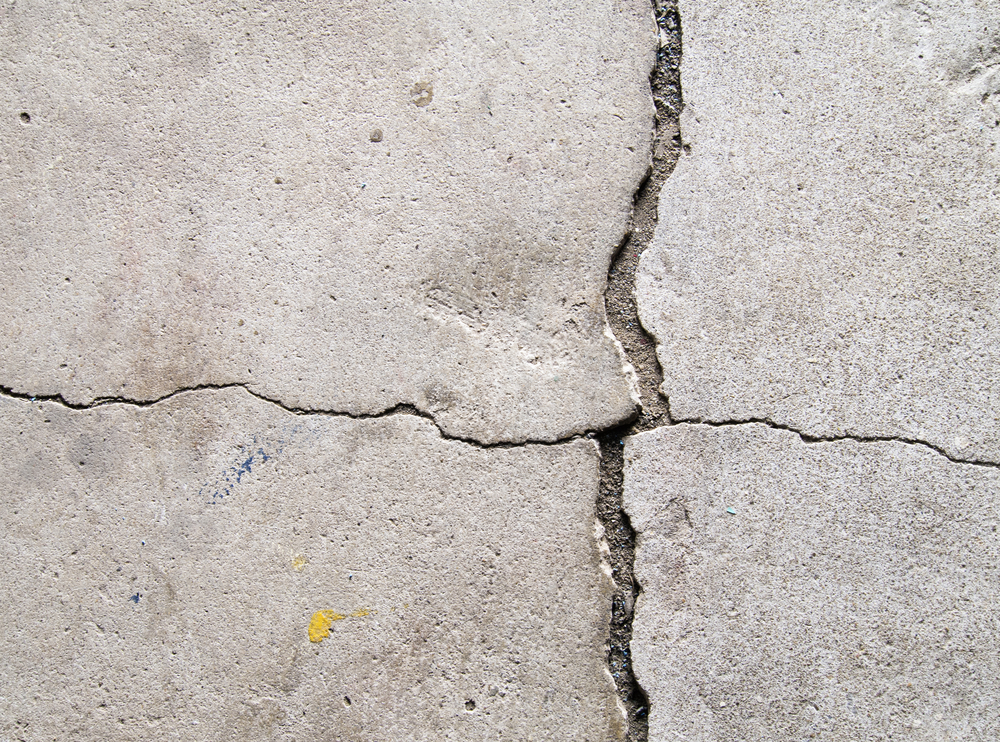
Concrete repair techniques for cracked slabs can often yield excellent results while saving you money. Although, it depends on the source of the cracks and what caused them. Industry professionals have noted several different types of cracks common to concrete; certain types can be fixed with the expertise of a concrete repair company.
Plastic Shrinkage Cracks
Concrete that is intended to fill a specific amount of space shrinks as it dries because it loses some moisture - a process known as plastic shrinkage. As the partially hardened concrete drags across the aggregate material that forms its base, the aggregate forms an impediment that puts stress on the concrete and can result in hairline cracks that seem minute, but which penetrate the entire thickness of the slab. If the contractor has mixed too much water with the concrete, the cracking will be extreme. If the concrete is poured around columns, pipes, plumbing fixtures, grades, or manholes, the concrete cannot shrink around these intrusions, so cracks form.
The way contractors handle plastic shrinkage is to limit it by adding control joints, which are grooves sawed into fresh concrete within 6 to 12 hours after finishing the concrete. Its purpose is to create a weak spot where cracking will occur rather than having the slab crack down the middle or in some other undesirable place. A driveway might have a joint running its length and then cut every 8 feet. If not properly jointed, cracks develop on their own - often in the same pattern that would have occurred if properly jointed.
To fix cracks of this type requires analyzing whether the crack is active or dormant and structural or cosmetic. After analysis, a good concrete repair specialist might suggest injecting the crack with a proxy or polyurethane and then sealing it. If the crack is not structural, the recommendation may be to leave the crack alone for now but monitor its progress.
Fixing Cracks from Heat and Cold
Properly laid concrete also has expansion joints built into the concrete to provide for the expansion that occurs in hot weather. The entire depth of the crack may be filled with material such as lumber, tar-impregnated cellulose fiber, or closed-cell poly foam to serve as a shock absorber. Over time, or if the proper amount of material was not added, concrete slabs can rub against each other or any object in the way. The result can be cracking, flaking off, or lifting. Undoing the damage of failed expansion joints might involve replacing the joint material with more of the original type and sealing the area. In some cases, if a slab has lifted, concrete leveling techniques might come into play.
A similar problem happens with concrete exposed to the freeze/thaw cycle in cold areas. Some slabs lift from the frozen ground and may crack if they have nowhere to go. Some slabs fall back in place when the ground thaws, but concrete lifting may be needed to fix the problem if they do not.
When you have cracks in your cement or areas that have lifted, you need the expertise of a concrete repair company to analyze and fix your problem. Lift Right Concrete specializes in concrete lifting, filling voids, crack repair, and other concrete repair processes.